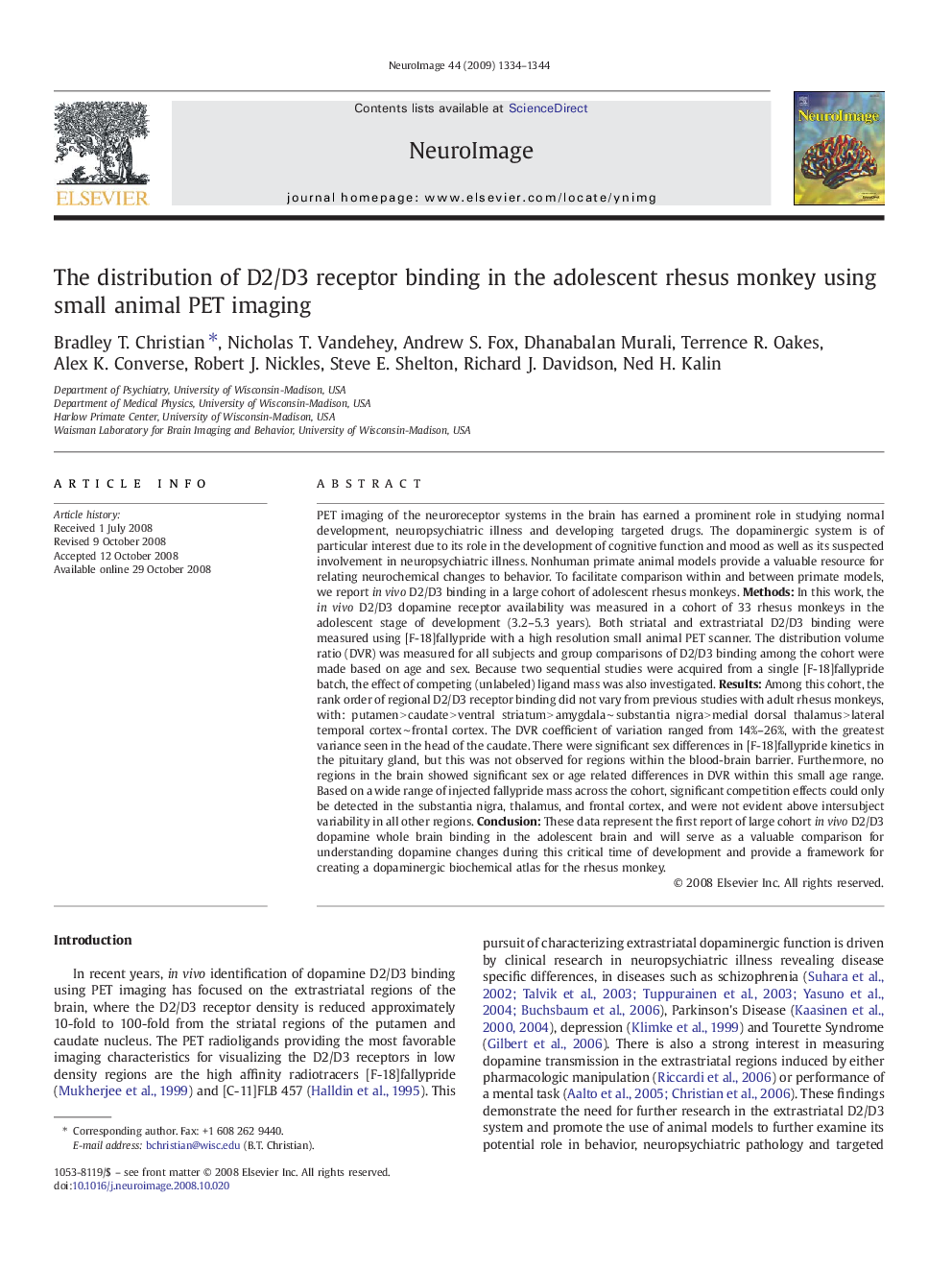| کد مقاله | کد نشریه | سال انتشار | مقاله انگلیسی | نسخه تمام متن |
|---|---|---|---|---|
| 3072460 | 1188784 | 2009 | 11 صفحه PDF | دانلود رایگان |

PET imaging of the neuroreceptor systems in the brain has earned a prominent role in studying normal development, neuropsychiatric illness and developing targeted drugs. The dopaminergic system is of particular interest due to its role in the development of cognitive function and mood as well as its suspected involvement in neuropsychiatric illness. Nonhuman primate animal models provide a valuable resource for relating neurochemical changes to behavior. To facilitate comparison within and between primate models, we report in vivo D2/D3 binding in a large cohort of adolescent rhesus monkeys. Methods: In this work, the in vivo D2/D3 dopamine receptor availability was measured in a cohort of 33 rhesus monkeys in the adolescent stage of development (3.2–5.3 years). Both striatal and extrastriatal D2/D3 binding were measured using [F-18]fallypride with a high resolution small animal PET scanner. The distribution volume ratio (DVR) was measured for all subjects and group comparisons of D2/D3 binding among the cohort were made based on age and sex. Because two sequential studies were acquired from a single [F-18]fallypride batch, the effect of competing (unlabeled) ligand mass was also investigated. Results: Among this cohort, the rank order of regional D2/D3 receptor binding did not vary from previous studies with adult rhesus monkeys, with: putamen > caudate > ventral striatum > amygdala ∼ substantia nigra > medial dorsal thalamus > lateral temporal cortex ∼ frontal cortex. The DVR coefficient of variation ranged from 14%–26%, with the greatest variance seen in the head of the caudate. There were significant sex differences in [F-18]fallypride kinetics in the pituitary gland, but this was not observed for regions within the blood-brain barrier. Furthermore, no regions in the brain showed significant sex or age related differences in DVR within this small age range. Based on a wide range of injected fallypride mass across the cohort, significant competition effects could only be detected in the substantia nigra, thalamus, and frontal cortex, and were not evident above intersubject variability in all other regions. Conclusion: These data represent the first report of large cohort in vivo D2/D3 dopamine whole brain binding in the adolescent brain and will serve as a valuable comparison for understanding dopamine changes during this critical time of development and provide a framework for creating a dopaminergic biochemical atlas for the rhesus monkey.
Journal: NeuroImage - Volume 44, Issue 4, 15 February 2009, Pages 1334–1344